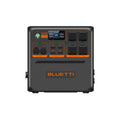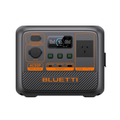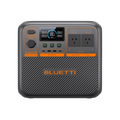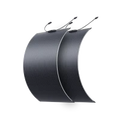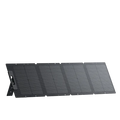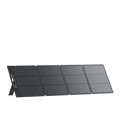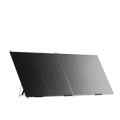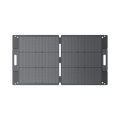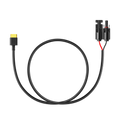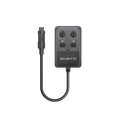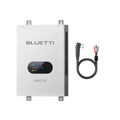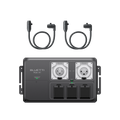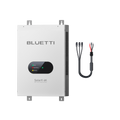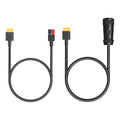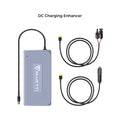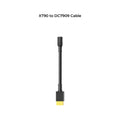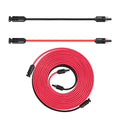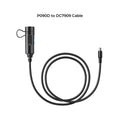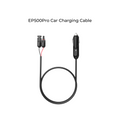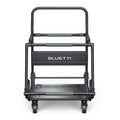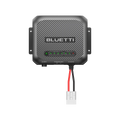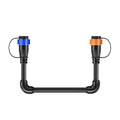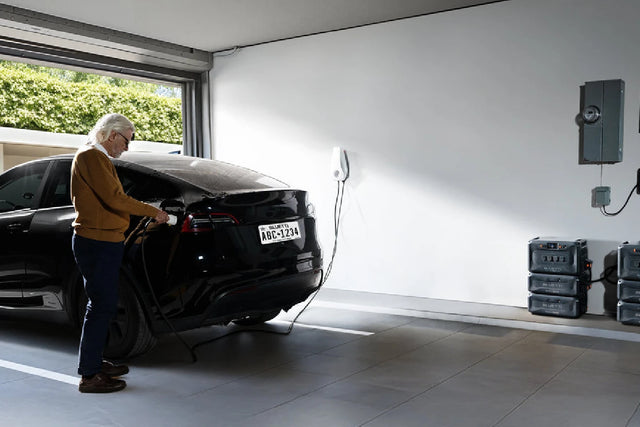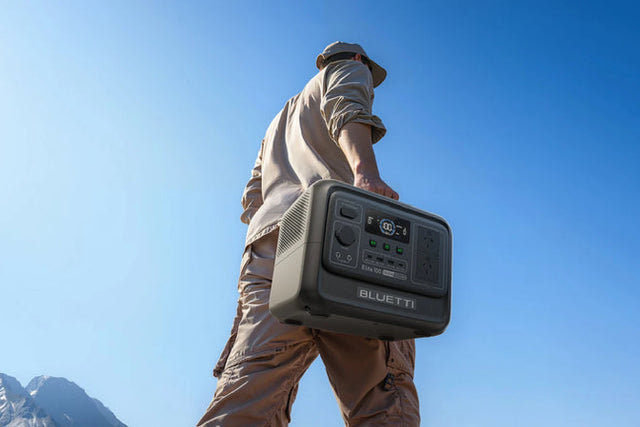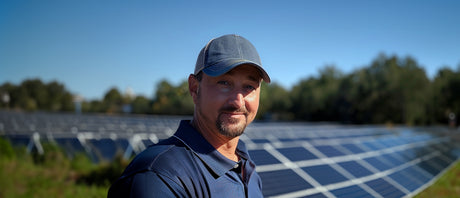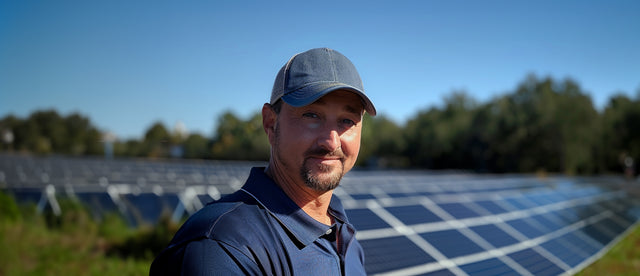As we enter 2024, the topic of renewable energy and its benefits have become increasingly important. With the rising concerns of climate change and the push towards a greener future, governments around the world have implemented various incentives and rebates to encourage the adoption of solar energy. One such initiative is the Queensland Solar Electricity Rebate, which aims to make solar power more accessible and affordable for households and businesses in the state. In this article, we will delve into the details of this rebate and its benefits, as well as explore the incentives, rebates, tariffs, and savings that it offers. For those looking to make the switch to solar energy in Queensland, this article will serve as a comprehensive guide to help you understand the rebate and its potential impact.
WHAT SOLAR REBATES ARE AVAILABLE IN QLD?
The Small-Scale Renewable Energy SchemeOne of the major solar rebates available in Queensland is the Small-Scale Renewable Energy Scheme (SRES). This scheme is designed to provide financial incentives for households, small businesses and community organizations to install solar panels and other renewable energy systems. Under this scheme, eligible participants can receive Small-scale Technology Certificates (STCs) which can be traded in the market for cash or discounts on their solar system installation. The number of STCs received depends on the size and location of the solar system, with larger systems and those in areas with high solar radiation receiving more STCs.
Queensland Battery Booster program
In 2021, the Queensland Government introduced the Battery Booster program which offers rebates of up to $3,000 for households and $10,000 for businesses to install battery storage systems. This initiative aims to support the uptake of renewable energy and help households and businesses become more self-sufficient in their energy use. The rebate amount is dependent on the storage capacity of the battery and must be installed by a Clean Energy Council approved installer.
Solar feed-in tariffs
Apart from rebates, households and businesses in Queensland can also benefit from the state's solar feed-in tariffs. A feed-in tariff is the rate at which the excess solar energy produced by a solar system is sold back to the grid. Currently, Queensland has a mandatory minimum feed-in tariff of 7.842 cents per kWh, which is set by the state government and is reviewed every six months. However, this rate can vary depending on the retailer and plan chosen, with some offering higher rates for solar feed-in.
WHAT ARE THE POTENTIAL SAVINGS FROM THESE REBATES?
These rebates and incentives can help make the initial cost of solar system installation more affordable, resulting in significant savings over the long term. With the SRES and Battery Booster program, households and businesses can save thousands of dollars on the cost of their solar system. Additionally, the solar feed-in tariffs can also provide financial benefits, helping to offset the cost of electricity bills and reducing the payback period for the solar system.HOW TO TAKE ADVANTAGE OF THESE REBATES?
To be eligible for these rebates and incentives, it is important to ensure that the solar system and installer meet the required criteria set by the government. This includes using Clean Energy Council approved products and installers for both the SRES and Battery Booster program. It is also recommended to compare different retailers and their solar feed-in tariff rates to get the best deal for your excess solar energy.the Queensland Solar Electricity Rebate in 2024 offers a range of incentives, rebates, and tariffs to promote the uptake of renewable energy. These programs not only aim to reduce the cost of solar system installation but also encourage households and businesses to become more self-sufficient in their energy use. By taking advantage of these rebates, individuals can not only save money but also contribute to a cleaner and more sustainable future.

THE SMALL-SCALE RENEWABLE ENERGY SCHEME IN QLD: HOW DOES IT WORK?
In 2001, the Australian Government launched the Small-scale Renewable Energy Scheme (SRES) as a part of their commitment towards reducing greenhouse gas emissions and promoting the use of renewable energy sources. The scheme provides financial incentives to households and businesses in Queensland who choose to install small-scale renewable energy systems such as solar panels, wind turbines, and hydro systems.
Under the SRES, the main form of incentive is given as Small-scale Technology Certificates (STCs). These certificates are a type of currency that can be traded for cash and are created whenever a small-scale renewable energy system is installed. The number of STCs given depends on the size of the system, the location, and the amount of electricity it is expected to generate over its lifetime.
In Queensland, the amount of STCs given for each system is determined by the Small-scale Renewable Energy Scheme STC calculator, which takes into account factors such as the size of the system, the location, and the amount of electricity it is expected to generate. The value of each STC is not fixed and can vary depending on market demand. However, the amount of STCs for a system will be guaranteed for up to 15 years from the date of installation, providing stability and certainty for those who choose to invest in small-scale renewable energy systems.
Once the renewable energy system is installed, the owner has the option to either keep the STCs and receive a discount on the system's cost or sell them through the STC market to registered agents who then sell them to large energy companies that are required to purchase a certain number of STCs to meet their renewable energy obligations.
One of the main benefits of the SRES is that it reduces the upfront cost of installing a small-scale renewable energy system, making it more affordable for households and businesses. It also encourages the use of clean and sustainable energy sources, thereby reducing our reliance on traditional forms of energy such as coal and gas.
BENEFITS AND SAVINGS FOR QUEENSLANDERS
The Queensland Solar Electricity Rebate, which is a part of the SRES, provides several benefits and savings for individuals and businesses in the state. Firstly, by installing a small-scale renewable energy system, households and businesses can significantly reduce their electricity bills as they will be producing their own energy, reducing their reliance on the grid.
Moreover, the Queensland Government also offers a feed-in tariff for excess electricity generated by small-scale renewable energy systems, which means that any extra energy produced can be sold back to the grid at a set rate. This allows households and businesses to not only save money on their electricity bills but also potentially make money by selling excess energy.
In addition to reducing energy costs, the SRES also has a positive impact on the environment by reducing greenhouse gas emissions. By choosing to install a small-scale renewable energy system, Queenslanders are contributing towards a cleaner and more sustainable future for generations to come.
CONCLUSION
The Small-scale Renewable Energy Scheme in Queensland plays a crucial role in encouraging the use of clean and sustainable energy sources. Through the provision of financial incentives in the form of STCs, the scheme reduces the upfront cost of installing small-scale renewable energy systems, making it more accessible for households and businesses. With the added benefits of feed-in tariffs and potential savings on electricity bills, the SRES offers a win-win situation for both the individuals and the environment. As we look towards a greener future, the Queensland Solar Electricity Rebate will continue to play a vital role in promoting the use of renewable energy and reducing our reliance on traditional forms of energy.

Firstly, the amount you can save through the scheme will depend on where you reside in Queensland. As electricity prices can vary across different regions within the state, the savings will also vary. For example, residents in areas with higher electricity rates, such as Brisbane and the Gold Coast, are likely to save more compared to those living in regional areas. However, regardless of your location, the Queensland Solar Electricity Rebate will still offer significant savings for eligible households.
Another factor that will impact your potential savings is the installation fee. The scheme offers a rebate of up to $3,000 for installing a solar system, which can significantly reduce the installation costs. However, the final amount you will save will depend on the size of your system and the installation fees charged by your chosen provider. It is essential to research and compare prices from different solar companies to ensure you are getting the best deal and maximizing your savings potential.
Lastly, your solar system's size will also play a crucial role in determining your overall savings. The larger the system, the more energy it can generate, resulting in higher savings on your electricity bill. However, it is essential to consider your household's energy consumption when choosing the size of your system. A professional solar installer can help you determine the most suitable system size based on your energy needs, ensuring you get the most out of the scheme.
the Queensland Solar Electricity Rebate 2024 offers exciting incentives and savings for eligible households in the state. The amount you will save will depend on various factors, including your location, system size, and installation fees. Therefore, it is crucial to research and compare prices to ensure you are receiving the most significant savings possible. With the growing popularity of solar energy in Queensland, taking advantage of this rebate scheme can help you save on your electricity bills while reducing your carbon footprint.
QUEENSLAND STC SOLAR REBATE VALUE:
The Queensland government has implemented a Solar Credit Scheme to promote the use of renewable energy sources and reduce the reliance on fossil fuels. As part of this scheme, eligible households and businesses can receive a solar electricity rebate, which helps to offset the cost of installing solar panels.
The value of the rebate is determined by the number of Small-scale Technology Certificates (STCs) that your system is eligible for. These certificates are created when a solar panel system is installed and registered, and can be traded for cash.
The table below outlines the rebate value for different system sizes, based on the current STC price of $39 per certificate.
| System size | STCs | Rebate Value |
|---|---|---|
| 3kW | 29 | $1,146 |
| 5kW | 48 | $1,896 |
| 6kW | 58 | $2,291 |
| 6.6kW | 63 | $2,489 |
| 7kW | 67 | $2,647 |
| 8kW | 77 | $3,042 |
| 8.5kW | 82 | $3,239 |
| 9kW | 87 | $3,437 |
| 10kW | 96 | $3,792 |
It is important to note that the STC price is subject to change, which can affect the rebate value. As such, it is recommended to check the current STC price before making any decisions about installing a solar panel system.
In addition to the STC rebate, households and businesses in regional Queensland may also be eligible for the Regional Queensland Solar Bonus Scheme. This scheme offers a feed-in tariff of 7.842 cents per kilowatt-hour (kWh) for solar power exported to the grid, for systems up to 30kW in size. This can provide further savings on electricity bills.
The Queensland government also offers a Solar for Rentals program, which provides landlords with a rebate of up to $3,500 to install a solar panel system on their rental property. This aims to make rental properties more energy efficient and reduce electricity costs for both landlords and tenants.
the Queensland Solar Electricity Rebate provides a significant incentive for households and businesses to invest in solar energy. Not only does it help to reduce the cost of installation, but it also promotes the use of renewable energy and contributes to a more sustainable future for Queensland.

How Do I Know if I’m Eligible?
If you reside in Queensland, Australia, and are considering installing a solar electricity system, you may be wondering if you are eligible for the Queensland Solar Electricity Rebate in 2024. This rebate, also known as the Solar Bonus Scheme, was established in 2008 to encourage households and small businesses to invest in solar energy. It offers financial incentives and subsidies to help offset the cost of installing a solar system, making it more affordable for individuals and businesses to transition to clean energy.So, how do you know if you are eligible for the Queensland Solar Electricity Rebate in 2024? There are a few key factors to consider. Firstly, the scheme is only available to Queensland residents, so if you live in another state, unfortunately, you cannot take advantage of this particular rebate. Additionally, the rebates are limited and subject to availability, so it is important to act fast before the funding runs out.
To be eligible for the Queensland Solar Electricity Rebate, your solar system must also meet certain requirements. It must have a capacity of no more than 100 kilowatts (kW) and be connected to the grid. This means that off-grid systems are not eligible for the rebate. Your solar system must also be installed by a Clean Energy Council (CEC) accredited installer and use CEC approved components.
Furthermore, to receive the Queensland Solar Electricity Rebate, your system must be installed on or after 19 May 2008. This is when the scheme was first introduced, and any systems installed before this date are not eligible. Additionally, all systems must have a minimum size of 1.5 kW and a maximum size of 100 kW to qualify for the rebate.
If you are a small business owner in Queensland, you may also be eligible for the Solar for Business Program, which offers a higher tariff rate for solar energy generated. To be eligible for this program, you must own a small business that uses less than 100,000 kilowatt hours (kWh) of electricity per year. This program is a great incentive for small businesses to invest in solar energy and help reduce their electricity bills.
Aside from these eligibility requirements, you must also meet certain financial criteria to be eligible for the Queensland Solar Electricity Rebate. For individuals and small businesses that are not eligible for the Solar for Business Program, the rebate is based on the size of your solar system and the date of installation. The earlier you install your system, the higher the rebate amount you will receive.
In summary, to be eligible for the Queensland Solar Electricity Rebate in 2024, you must be a resident of Queensland and meet certain requirements related to your solar system's size, installation date, and components. The rebate is also subject to availability and may vary depending on your eligibility for the Solar for Business Program. It is recommended to research and apply for the rebate as soon as possible to secure your spot and take advantage of this fantastic incentive for solar energy.
Queensland Battery Booster Program
The Queensland Solar Electricity Rebate 2024 not only offers incentives and rebates for installing solar panels, but also includes a Battery Booster Program. This program is aimed at encouraging households and businesses to install battery storage systems along with their solar panels.Battery storage systems are essentially large rechargeable batteries that store excess energy produced by solar panels during the day. This stored energy can then be used during the evening or on cloudy days when the solar panels may not produce enough energy. This not only increases the self-consumption of solar energy, but also reduces the need for electricity from the grid, leading to further cost savings.
Under the Battery Booster Program, eligible households and businesses can receive a one-off rebate of up to $3,000 for installing a battery storage system in addition to their solar panels. This rebate amount may vary depending on the size and capacity of the battery.
In addition to the rebate, the program also offers a tariff incentive for households and businesses who participate in the program. This tariff incentive is in the form of a feed-in tariff, where excess energy produced by the solar panels and stored in the battery is exported back to the grid. Participants in the program can receive a higher feed-in tariff rate compared to regular solar panel owners, providing them with increased savings on their electricity bills.
The Queensland Battery Booster Program also offers additional savings through virtual power plants (VPPs). VPPs are networks of battery storage systems that are connected and managed by a central control system. The excess energy stored in these batteries can be used to power the grid, reducing the strain on traditional energy sources and providing participants with further monetary benefits.
This program not only benefits individual households and businesses, but also has a positive impact on the environment. By encouraging the use of battery storage systems, the program reduces the reliance on traditional energy sources and promotes the use of renewable energy. This leads to a reduction in greenhouse gas emissions and supports the state's goal of transitioning to a clean and sustainable energy future.
To be eligible for the Battery Booster Program, households and businesses must meet certain criteria, such as having an existing solar panel system and being connected to the grid. They must also use a Clean Energy Council approved battery storage system and engage with an accredited installer to ensure the system is installed correctly.
the Queensland Battery Booster Program offers a range of incentives, rebates, tariffs, and savings for households and businesses who install battery storage systems along with their solar panels. This program not only assists in reducing electricity bills, but also contributes to a cleaner and greener environment. With the rapidly increasing popularity of solar panels, the Battery Booster Program provides further support and encouragement for residents and businesses in Queensland to embrace renewable energy and move towards a more sustainable future.
1. What is the current amount of the Queensland Solar Electricity Rebate?
The current amount of the Queensland Solar Electricity Rebate is a crucial factor to consider when discussing the incentives, rebates, tariffs, and savings associated with the program. As of 2021, the rebate is set at $3,500 for eligible households and $3,000 for eligible small businesses. This means that households and small businesses can receive a one-time payment of up to $3,500 and $3,000 respectively when they install a solar PV system.
The rebate amount is subject to change, and the government has recently announced a reduction in the rebate amount starting from 2022. From 2022 onwards, the rebate will be gradually reduced by $350 every year until it is phased out completely in 2028. This decision was made due to the increasing popularity of the program, which has led to a budget constraint for the government.
It is important to note that the rebate is only available for systems with a capacity of up to 100kW. Systems with a capacity of over 100kW are not eligible for the rebate and are subject to different incentives and tariffs. Additionally, the rebate amount may vary for systems that are installed in off-grid or remote areas.
the current amount of the Queensland Solar Electricity Rebate has a significant impact on the attractiveness and affordability of the program. With a reduction in the rebate amount, it is essential for households and small businesses to carefully consider their options and plan accordingly to take advantage of the remaining rebates before they are phased out completely.
2. How does the rebate work and who is eligible to receive it?
The Queensland Solar Electricity Rebate is a government initiative aimed at encouraging households and businesses to install solar panel systems. The rebate offers financial incentives to eligible applicants, in the form of a one-time discount on the upfront cost of purchasing and installing a solar panel system. This discount is often referred to as a 'rebate', and is calculated based on the size of the solar system and the number of solar panels installed.
To be eligible for the Queensland Solar Electricity Rebate, applicants must meet certain criteria set by the government. These criteria vary depending on the property type (residential or business) and the location of the property. Generally, homeowners, small businesses, and primary producers are eligible if their property is connected to the grid and they use electricity for residential or business purposes. Renters may also be eligible if they have landlord and/or local council approval.
To apply for the rebate, applicants must first have their solar panel system installed by a Clean Energy Council (CEC) accredited installer. Once the system has been installed and the necessary paperwork has been completed, applicants can then submit a claim for the rebate through the government's online portal. The rebate is then paid directly to the installer, reducing the overall cost of the system for the applicant.
It is important to note that the amount of the rebate and the criteria for eligibility may change from year to year. Therefore, it is recommended to regularly check the government's website for updates and to consult with a CEC accredited installer for the most current information. the Queensland Solar Electricity Rebate is a valuable incentive for households and businesses looking to invest in renewable energy and reduce their energy costs.
3. Are there any other incentives or rebates available for solar electricity in Queensland?
There are several other incentives and rebates available for solar electricity in Queensland, in addition to the Queensland Solar Electricity Rebate 2024. One of these is the Small-scale Renewable Energy Scheme (SRES), which provides financial incentives for the installation of small-scale renewable energy systems, including solar panels.
Another incentive is the Solar Feed-in Tariff, which allows households and businesses to earn credits for excess solar energy that is fed back into the grid. In some areas of Queensland, there are also local government rebates available for solar installations.
In addition to these incentives, there are various grants and funding programs available for solar installations in Queensland, such as the Regional Business Support Package and the Energy Efficient Communities Program.
It is important to note that the availability and eligibility criteria for these incentives and rebates may vary depending on factors such as location, system size, and installation date. It is recommended to research and consult with a reputable solar installer to determine the specific incentives and rebates that may apply to your situation.
4. What is the timeline for the rebate, and will it change in the future?
The current timeline for the Queensland Solar Electricity Rebate 2024 is set to begin on July 1st, 2021 and will run until June 30th, 2024. This means that eligible homeowners who install a solar PV system during this time frame can receive a rebate of up to $3,500. However, it is important to note that the rebate amount is subject to change in the future, as it is dependent on government funding. Therefore, it is crucial for homeowners to take advantage of this incentive while it is still available and keep an eye on any updates or changes to the rebate program. Additionally, the rebate program may also change in terms of eligibility criteria or rebate amounts in the future, as the government may adjust the program to align with their renewable energy goals and budget constraints.
5. How much money can I potentially save by taking advantage of the rebate and other solar incentives in Queensland?
The amount of money you can potentially save by taking advantage of the Queensland Solar Electricity Rebate 2024 and other solar incentives depends on a variety of factors. These include the size and efficiency of your solar system, your current electricity usage, and the specific rebates and incentives you apply for.
According to the Queensland Government, the average household with a 6.6 kW solar system can save up to $1,500 per year on electricity bills. This amount can increase even further if you are eligible for additional rebates and incentives, such as the Small-scale Technology Certificates (STCs) and the Feed-in Tariff (FiT).
The STCs are a form of financial benefit that you receive for generating renewable energy with your solar system. The amount you can save through STCs depends on the market value of the certificates, which can vary over time. On the other hand, the FiT is a credit that you receive for excess energy your solar system feeds back into the grid. This varies depending on your electricity retailer and the terms of your contract.
by taking advantage of the Queensland Solar Electricity Rebate 2024 and other solar incentives, you can potentially save hundreds to thousands of dollars on your electricity bills annually. It is important to do your research and carefully consider your options to maximize your savings.
The Queensland Solar Electricity Rebate 2024 is a government initiative that aims to encourage the adoption of solar energy in households and businesses across the state. This rebate provides financial incentives to eligible customers who install solar panels and connect them to the electricity grid.
Incentives and Rebates:
Under the Queensland Solar Electricity Rebate 2024, eligible customers can receive a one-off rebate of up to $3,500 for purchasing and installing a new solar panel system. This rebate is available for both residential and small business customers, with different eligibility criteria and rebate amounts for each.
Residential customers can receive a rebate of up to $3,000 if they meet the following requirements:
- Have a household income of less than $180,000 per year
- Own and live in the property where the solar panel system will be installed
- Have a valid concession card or be eligible for a concession through their electricity retailer
- Install a solar panel system that is no larger than 10kW
Small business customers can receive a rebate of up to $3,500 if they meet the following requirements:
- Have an annual electricity consumption of less than 100MWh
- Own and operate a business in Queensland
- Install a solar panel system that is no larger than 100kW
Tariffs and Savings:
In addition to the rebate, households and businesses that install solar panel systems can also benefit from net metering. This means that any excess electricity generated by their solar panels can be fed back into the grid and credited on their electricity bill. This can result in significant savings on electricity costs over time, as customers are essentially being paid for the excess electricity they generate.
Furthermore, by using solar energy instead of grid electricity, customers can also reduce their reliance on fossil fuels, which helps to reduce carbon emissions and contribute to a more sustainable future.
How to Apply:
To apply for the Queensland Solar Electricity Rebate 2024, customers need to follow the steps outlined by the Department of Energy and Public Works' Solar Homes and Communities Plan. This includes choosing an approved solar panel system, completing an eligibility check, and applying for the rebate through an accredited installer.
the Queensland Solar Electricity Rebate 2024 is a valuable incentive for customers looking to invest in solar energy. With financial incentives, net metering, and the opportunity to reduce carbon emissions, this rebate is a great opportunity for households and businesses to save money and contribute to a more sustainable future. So don't wait any longer, make the switch to solar and start reaping the benefits today!
Shop products from this article
Be the First to Know
You May Also Like
For Australians exploring a sustainable future, harnessing solar power with a robust battery bank could be the perfect solution for our energy needs. Imagine tapping into the sun’s abundant energy...
For those looking to harness the sun's power and achieve true energy independence, Australia offers a treasure trove of solar battery storage options designed to meet a variety of needs....


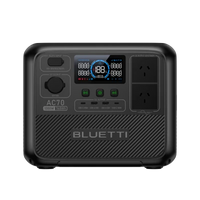
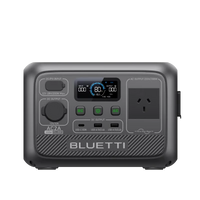
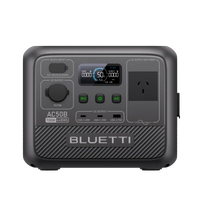

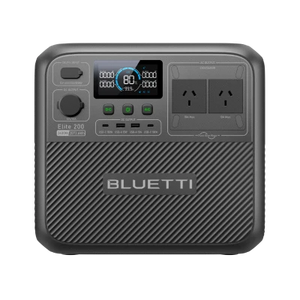
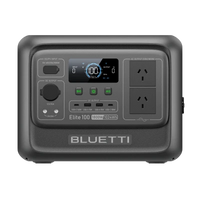
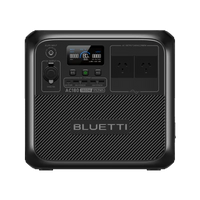
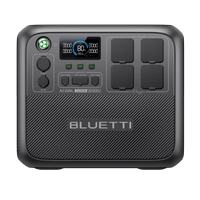
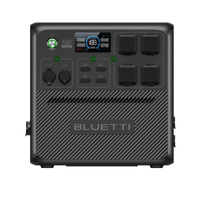
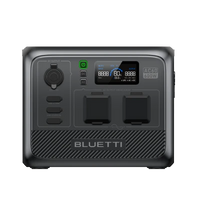
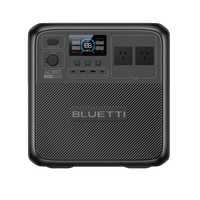


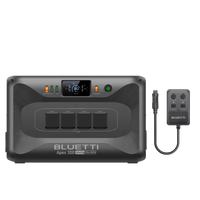

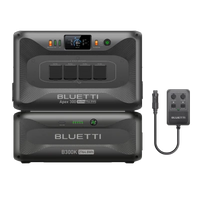
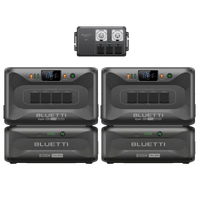
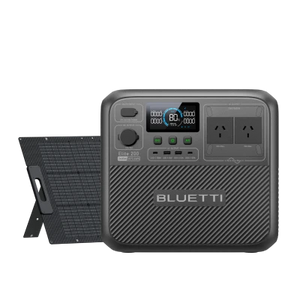
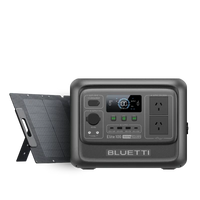
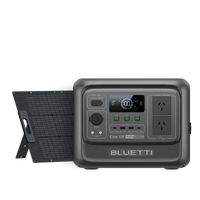
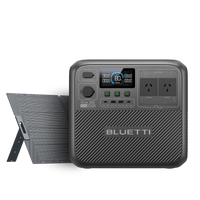
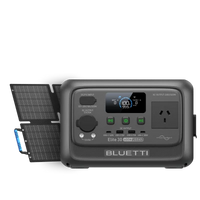
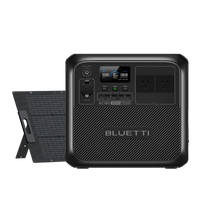
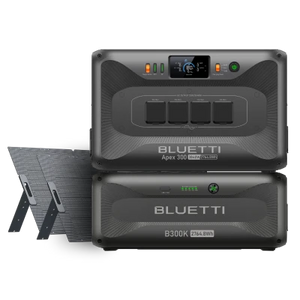
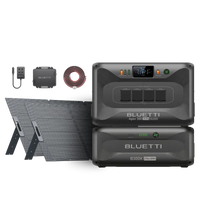
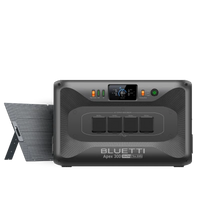
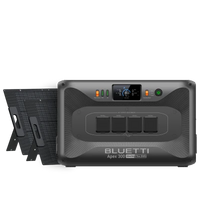
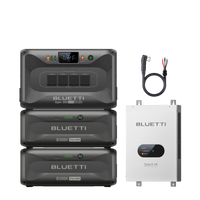

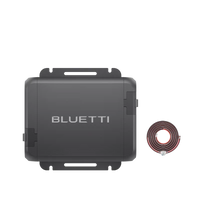
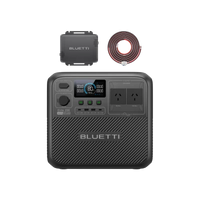
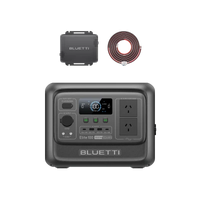
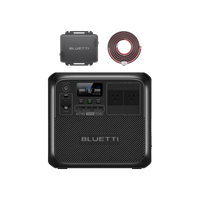
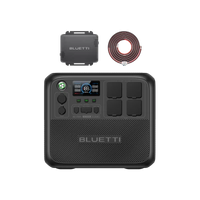
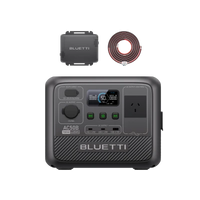
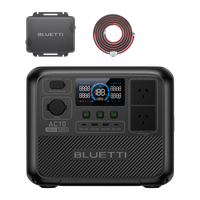


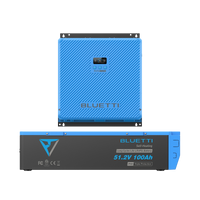
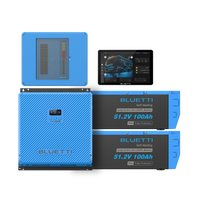
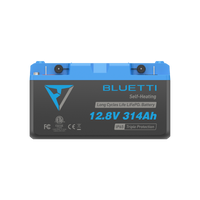
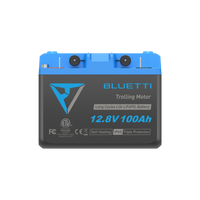
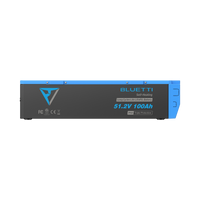
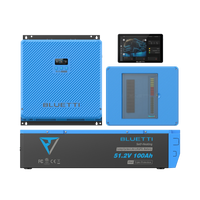
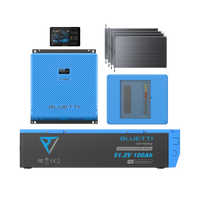
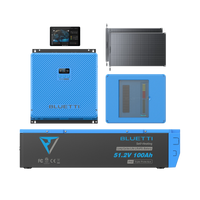
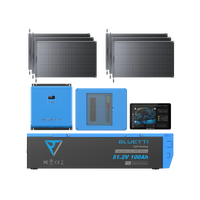

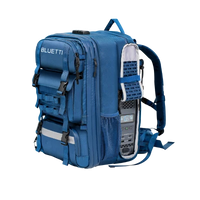
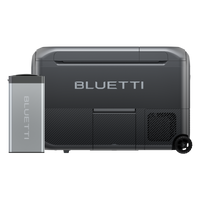
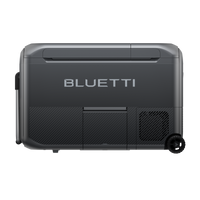
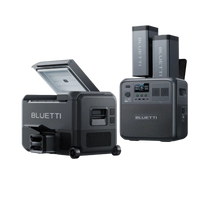
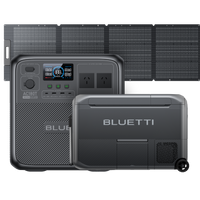
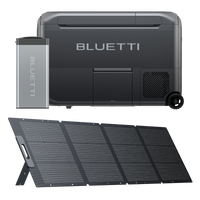
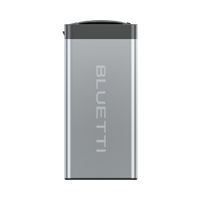
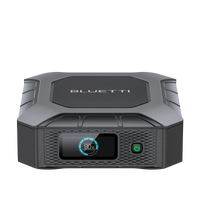
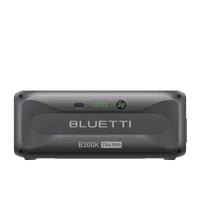

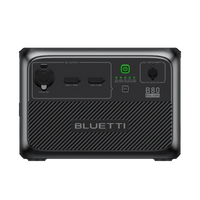
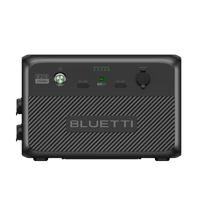

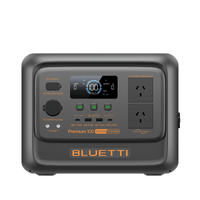
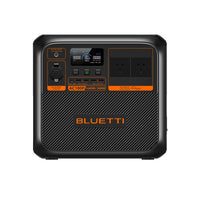

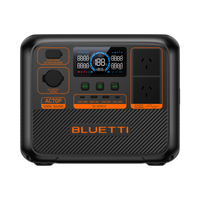
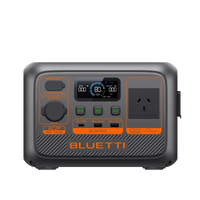
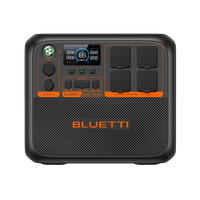
![[Phased Out] BLUETTI B80P Expansion Battery | 806Wh](http://www.bluettipower.com.au/cdn/shop/files/202310025B80P_2000-2000px_4_4caa0c1c-4dab-4272-9e9b-2b7507e5bd81.jpg?v=1713777870&width=200)
![[Phased Out] BLUETTI B210P Expansion Battery | 2,150Wh](http://www.bluettipower.com.au/cdn/shop/files/2_08cf9ef3-03a4-4489-b641-d3edb8094896.webp?v=1716016566&width=200)
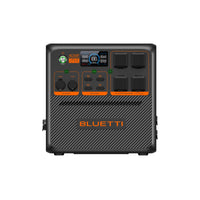
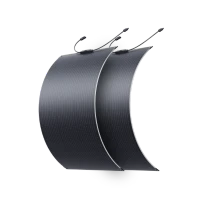
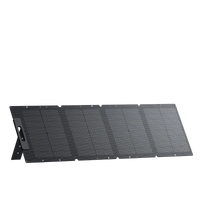
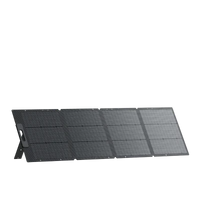
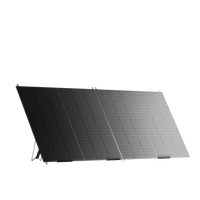

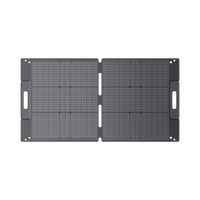

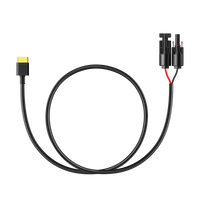
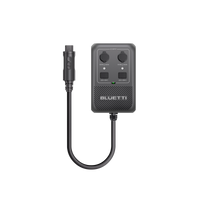
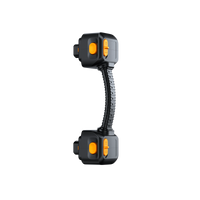
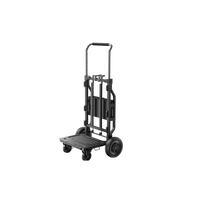
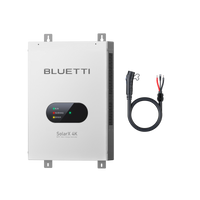
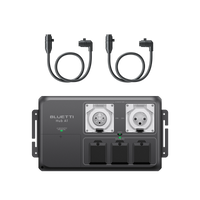
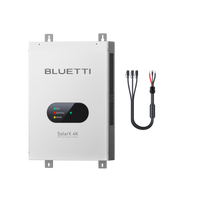
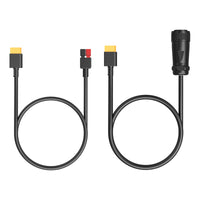
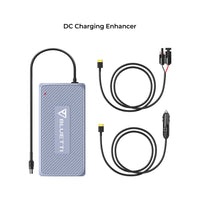
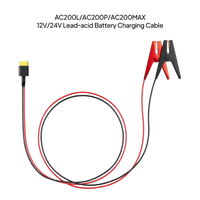
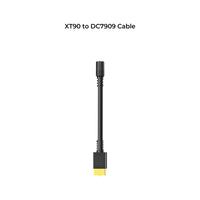
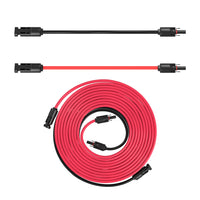
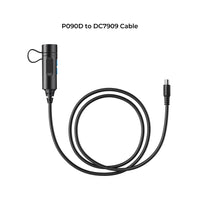
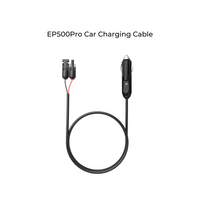
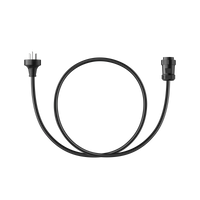
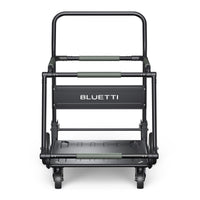
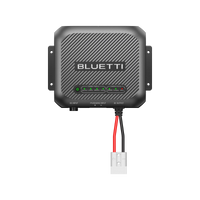
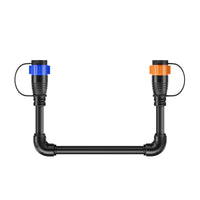



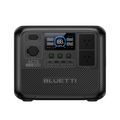
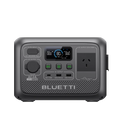
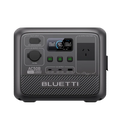


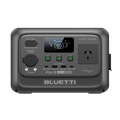
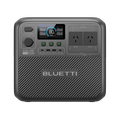
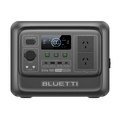
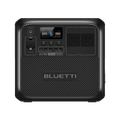
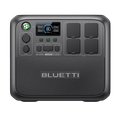
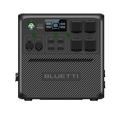
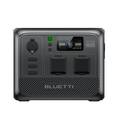
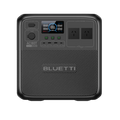


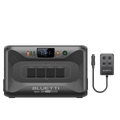

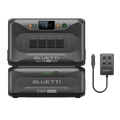
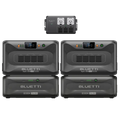




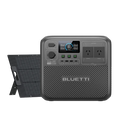
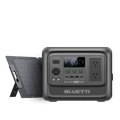
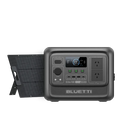
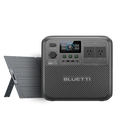
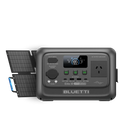
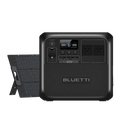
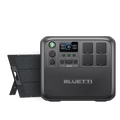
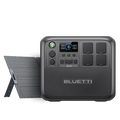




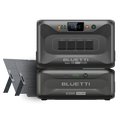
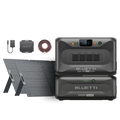
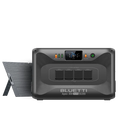
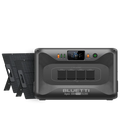
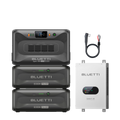

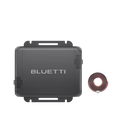
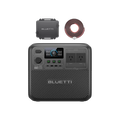
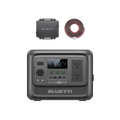
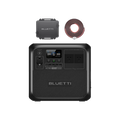
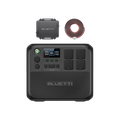
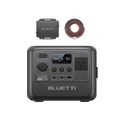
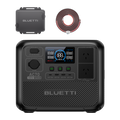
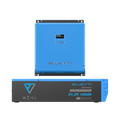
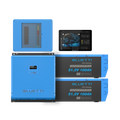
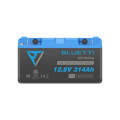
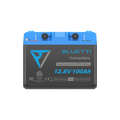
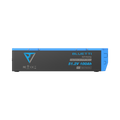
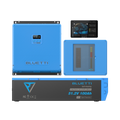
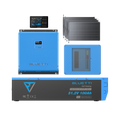
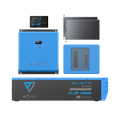
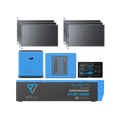
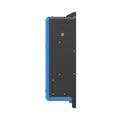


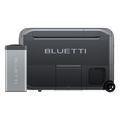
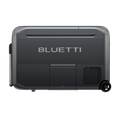
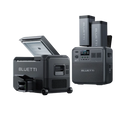
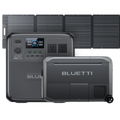
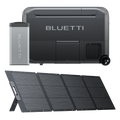
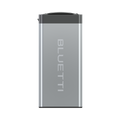
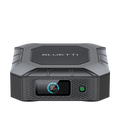
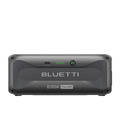

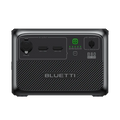
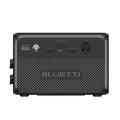
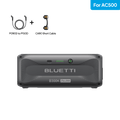
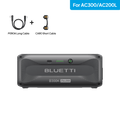
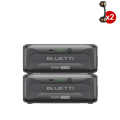
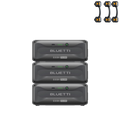




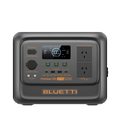
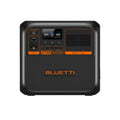

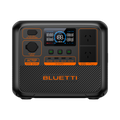
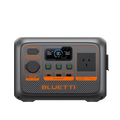
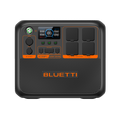
![[Phased Out] BLUETTI B80P Expansion Battery | 806Wh](http://www.bluettipower.com.au/cdn/shop/files/202310025B80P_2000-2000px_4_4caa0c1c-4dab-4272-9e9b-2b7507e5bd81.jpg?v=1713777870&width=120)
![[Phased Out] BLUETTI B210P Expansion Battery | 2,150Wh](http://www.bluettipower.com.au/cdn/shop/files/2_08cf9ef3-03a4-4489-b641-d3edb8094896.webp?v=1716016566&width=120)
